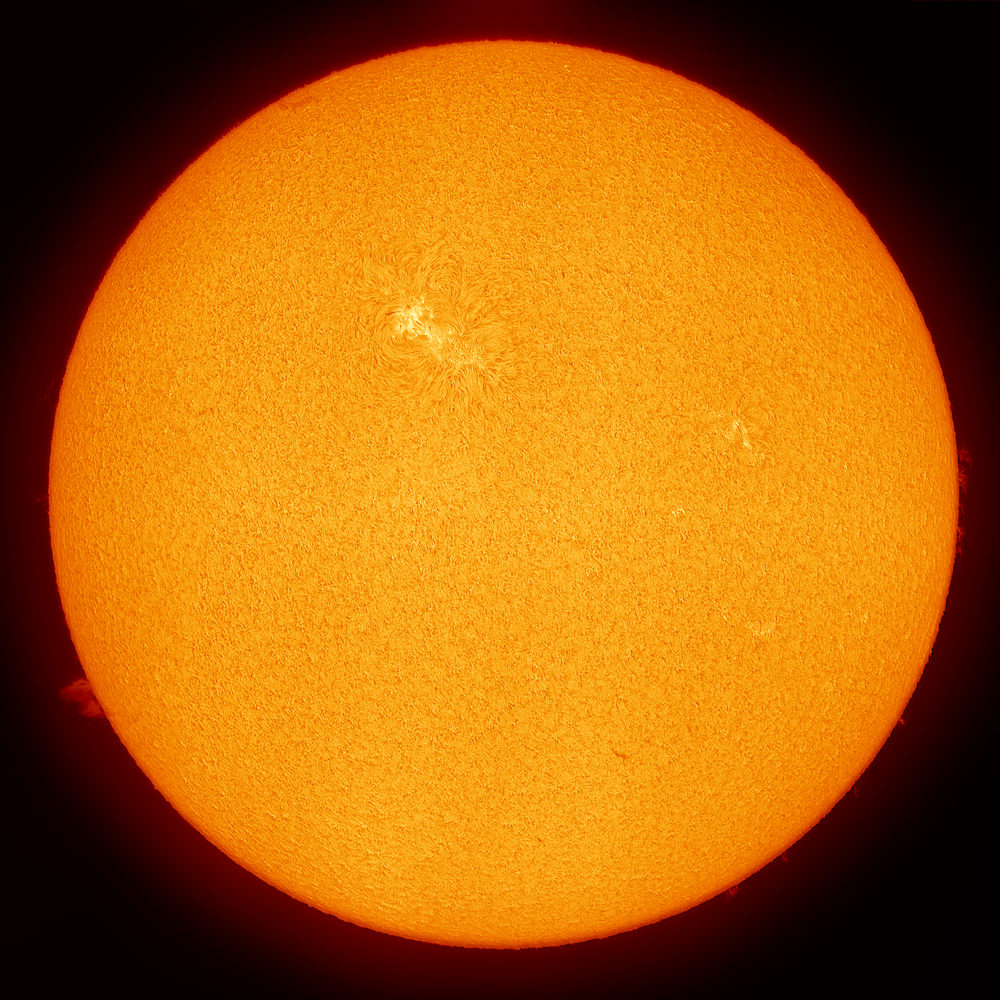You can take a Hydrogen-alpha shot of the Sun on any day, so astroimagers focus on other techniques during a fleeting eclipse.
Hydrogen-alpha filters show the Sun at a wavelength of 656.28 nanometers, in the red portion of the visible spectrum. However, the corona does not appear in images taken at this wavelength. Credit: Paul Stewart
I’ve never seen any eclipse photos using a Hydrogen-alpha (Hα) filter. Is there any reason not to use such a filter for taking photographs of a total solar eclipse?
Stephen NelsonEvergreen, Colorado
The reason involves how astroimagers targeting a total solar eclipse want to allocate their time. In short, you can take an Hα shot of the Sun on any day.
A shot during the partial phases of an eclipse will show whatever percentage of the Sun is visible, albeit in Hα. During totality, the Moon blocks the Sun’s disk, so the filter will only show the prominences at its edge.
Astronomers (professional and amateur) know the main reason to photograph totality is to reveal the spectacular solar corona, the outer atmosphere of our daytime star. Unfortunately, it will not show up in an Hα image, so few people have taken such photos during total solar eclipses.





